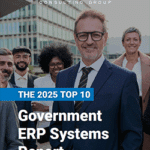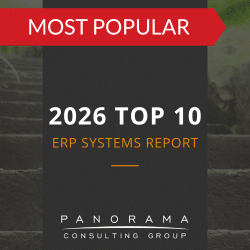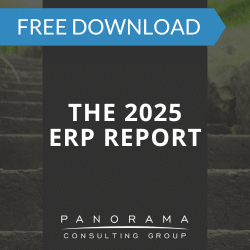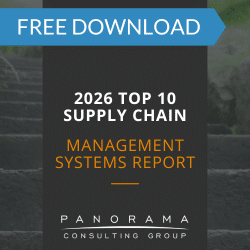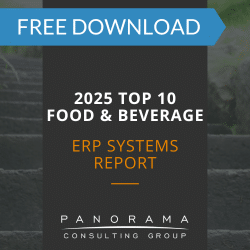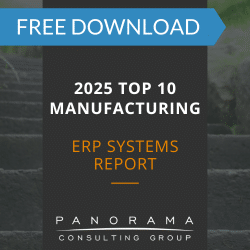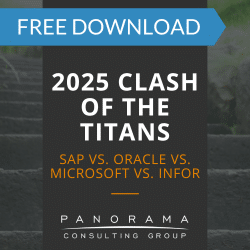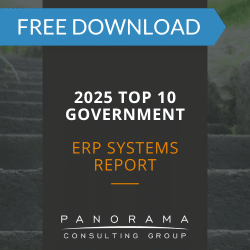Key Takeaways
- Sustaining ERP efficiency requires ongoing alignment between system capabilities, user adoption, and evolving business needs.
- Post-implementation optimization plays a critical role in translating ERP functionality into measurable business outcomes.
- ERP continuous improvement involves structured efforts to refine workflows, resolve inefficiencies, and drive long-term value.
The software is live, the consultants have exited, and executives turn their focus elsewhere. Now, the true test of ERP success begins.
Sustaining ERP efficiency in the post-implementation phase is about ensuring the system adapts to evolving business needs, users engage effectively with it, and the organization manages change and complexity over time.
From an advisory standpoint, we have seen organizations across industries face a common challenge: after the intense focus of implementation, leadership attention drifts and operational ownership becomes fragmented. Today, we’re talking about how to do the opposite: sustain leadership involvement and solidify ownership of evolving business processes.
The 2026 Top 10 ERP Systems Report
What vendors are you considering for your ERP implementation? This list is a helpful starting point.
The Efficiency Gap After Go-Live
It is easy to assume that once the system is up and running, the hardest work is behind you.
In reality, post-implementation is when your ERP system is finally exposed to the unpredictability of day-to-day business. As a result:
- Users encounter misaligned workflows.
- Data models buckle under operational complexity.
- Integration gaps surface.
Without a plan for post-implementation optimization, small inefficiencies quietly accumulate and weaken the system’s value.
Why Post-Implementation Optimization Matters
Whether you are in manufacturing, the public sector, or professional services, the real value of ERP lies in how effectively your organization optimizes the system after go-live.
Post-implementation optimization refers to the deliberate effort to refine ERP workflows, strengthen user adoption, and improve data accuracy after the initial rollout. Leaders should view this as the start of a new performance cycle—one that emphasizes iteration, measurement, and alignment.
Five Best Practices for Sustaining ERP Efficiency
1. Establish a Continuous Improvement Governance Model
After go-live, ownership often disperses.
To counter this, we recommend establishing a dedicated ERP optimization team with both IT and operational representation.
Executives should treat this team as a strategic function focused on continuous improvement. This group should meet regularly to review usage patterns, prioritize enhancements, and evaluate user feedback.
2. Link System Performance to Business KPIs
Too often, ERP performance is measured solely by uptime and ticket resolution speed. That lens is too narrow.
Instead, tie system success to metrics that actually matter to the business, such as:
- Order cycle time
- Inventory turns
- On-time payroll
- Financial close efficiency
In post-implementation optimization, KPIs act as warning signs of system misconfiguration, data integrity issues, and process misalignment.
Our ERP implementation consultants always tell clients to make business KPIs the language of their ERP discussions. This reframes ERP efficiency as a value driver instead of a cost center.
3. Develop a Proactive Vendor Management Strategy
Post-go-live ERP efficiency depends heavily on your relationship with your vendor. A hands-off approach leaves you exposed to performance drift.
Organizations should establish structured, two-way vendor communication frameworks. This might include regular planning meetings before updates, business-outcome SLAs, and objective scorecards to track vendor responsiveness.
ERP vendor relationships grow more complex after go-live, especially in cloud environments. Sustaining ERP efficiency depends on shared accountability between your internal team and external partners.
4. Strengthen Process Ownership and Training Cycles
One of the most common causes of inefficiencies after go-live is internal process drift. This occurs when employees revert to old habits like using spreadsheets or workarounds, rather than following standardized workflows.
We recommend using the post-implementation stage to reinforce process ownership across departments. Every core ERP function—procure-to-pay, record-to-report, order-to-cash—needs a clearly defined business owner. These owners should oversee both system usage and process refinement.
In addition, our ERP advisors often tell clients to establish a structured re-training cycle every 6–12 months to reflect system updates, policy changes, and user feedback.
5. Run Optimization Sprints
Rather than waiting for pain points to escalate, high-performing organizations run structured “optimization sprints” post-go-live. These are short cycles—typically 4–6 weeks—that focus on a specific improvement area, such as:
- Automating a manual workflow
- Eliminating redundant data entry
- Improving dashboard visibility
Each sprint should include current-state analysis, stakeholder workshops, configuration updates, and success measurement.
Optimization sprints are especially valuable in multi-entity environments because what works well at headquarters may create inefficiencies in a newly acquired business unit.
An example of how structured optimization can transform post-implementation performance comes from a Panorama client in the oil and gas sector. The company’s ERP rollout had initially faltered due to fragmented processes, data inaccuracy, and resistance to change. That’s when they asked Panorama to help stabilize the environment and rebuild user confidence.
Using process redesign and targeted optimization sprints, we increased data accuracy to over 95% within a year, while improving standard business process compliance from under 40% to more than 90%.
Learn More About ERP Continuous Improvement
Post-implementation optimization is where real transformation takes root. It is the phase where organizations align the system with changing business needs and manage change to sustain long-term ERP efficiency.
Independent ERP consultants play a key role in this process. With no financial ties to software vendors, Panorama helps organizations assess post-go-live performance, identify efficiency gaps, and structure continuous improvement programs that deliver business outcomes.


